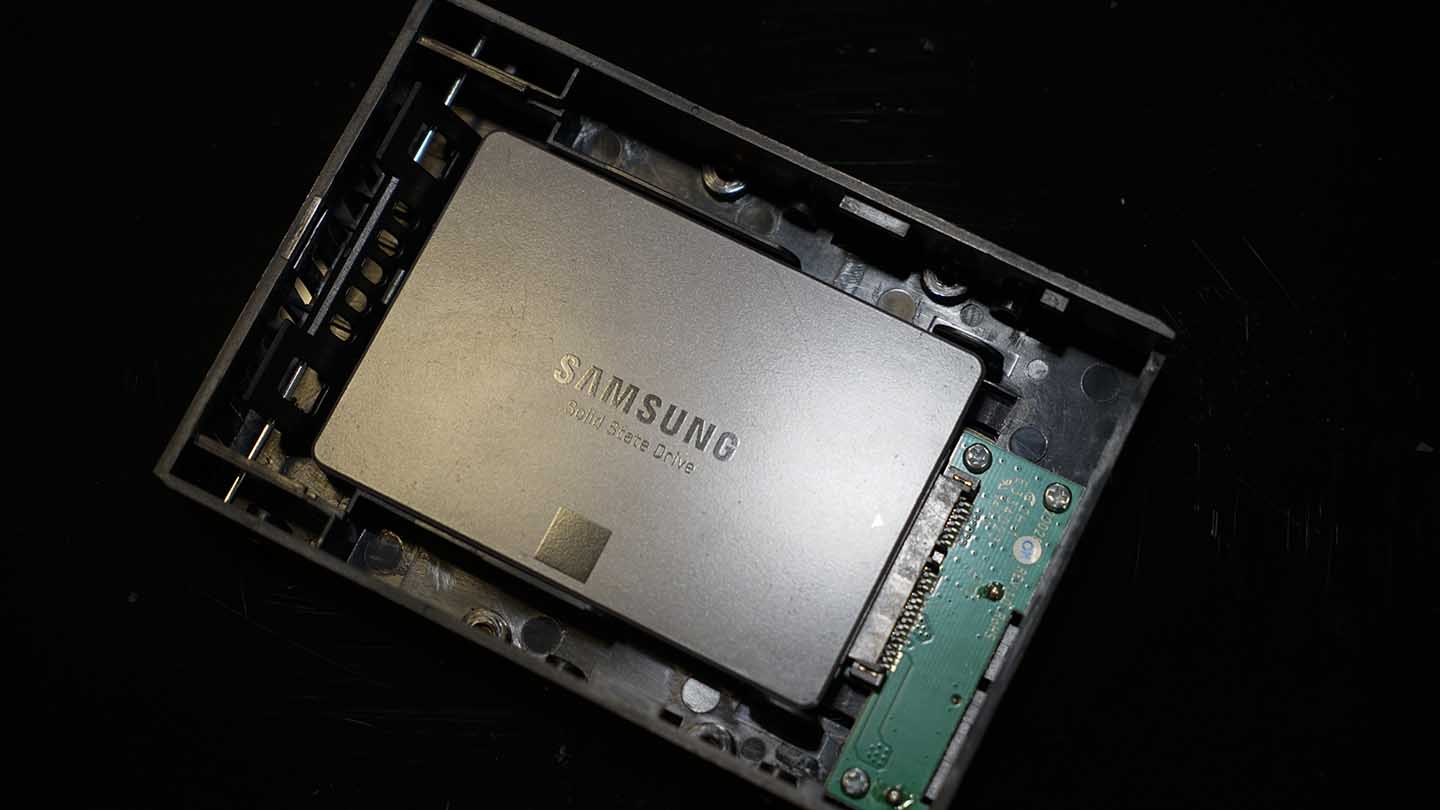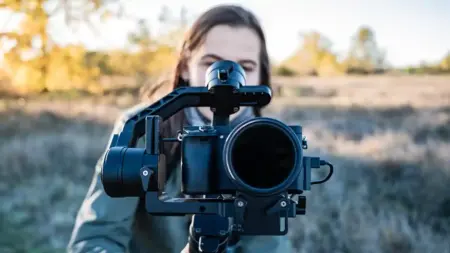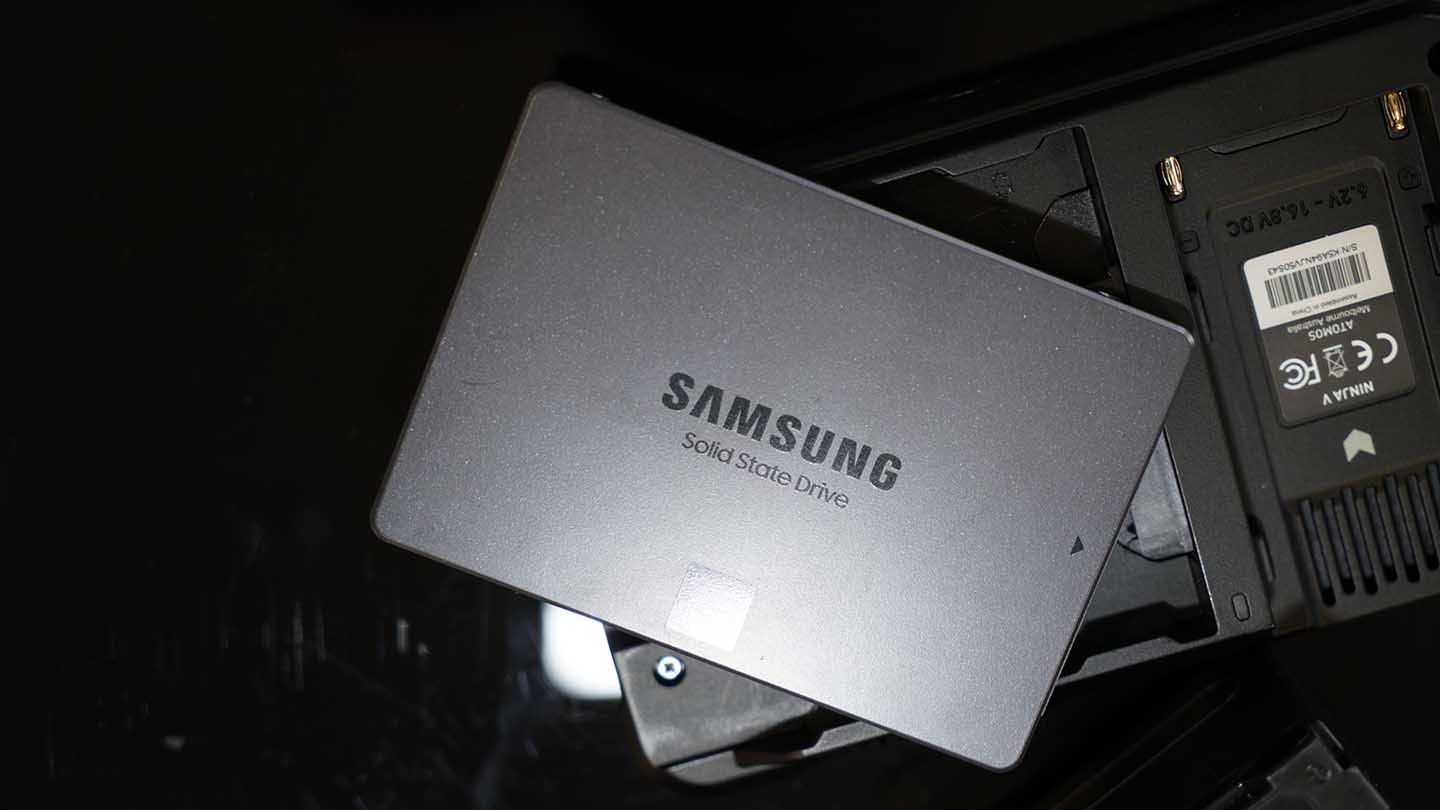Storage is one of those workflow areas of photography and video that should be simple, but as technology enhances and speeds and capacities increase, it gets increasingly complex.
The Samsung 870 QVO 4TB SSD utilises a standard SATA interface; this means that it’s compatible with most PCs and external hard drive enclosures. It can also be used as a storage device for the ATOMOS Ninja V.

At 4TB that’s a hefty amount of storage for one drive especially considering that this is an SSD. That size of storage doesn’t come cheap either, but then as we shoot with higher resolution cameras and 4K video, these capacities are now a necessity.
While the 870 QVO might not have the speed of the latest NVMe, it’s still fast, more than enough for most working drive needs. It also has the capacity of more traditional optical drives and strikes a decent balance between the old and latest storage technology.
Fitting the 870 QVO inside a variety of devices, I put this 4TB SSD through a series of tests in different scenarios, let’s find out how it fared.








